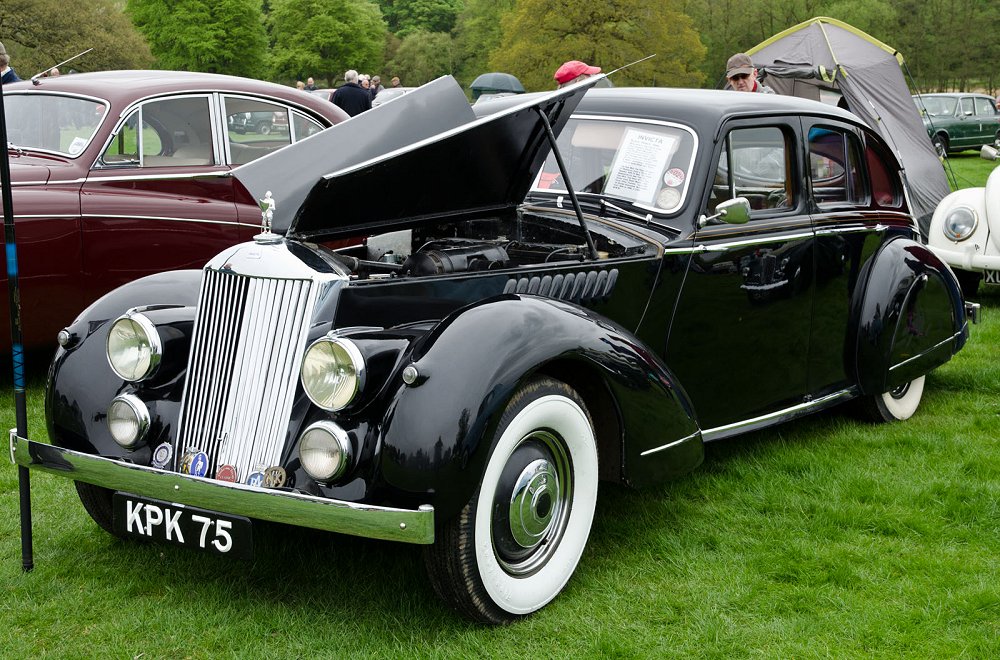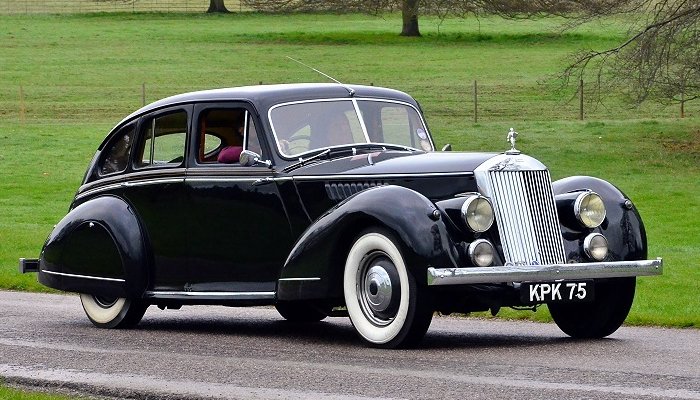Description
The Invicta Black Prince Saloon was one of the most advanced, exclusive, and technically sophisticated British cars of the immediate postwar era—a luxurious grand tourer that sought to revive the Invicta name after a decade of silence. Produced between 1946 and 1950, the Black Prince represented an ambitious attempt to bring modern engineering and pre-war craftsmanship together in a single car. Though its price and complexity limited production to only a handful of examples, it remains one of the most fascinating and impressive luxury cars of its generation—a machine that combined cutting-edge innovation with the traditional quality that had defined Invicta’s pre-war masterpieces like the Type S.
The story of the Black Prince began when engineer and entrepreneur D. M. “Mike” Oliver acquired the rights to the Invicta name after the Second World War. Determined to restore the marque’s reputation for excellence, he set out to create a car that would be not only luxurious but technologically superior to anything else on the market. The result was the Invicta Black Prince—a striking, hand-built saloon that embodied the optimistic spirit of postwar British engineering. It was unveiled to great acclaim in 1946, promising refinement, speed, and sophistication in equal measure.
At the heart of the Black Prince was an advanced six-cylinder Meadows engine, developed specifically for this model. Displacing 3.0 litres, it was a robust overhead-valve unit equipped with a unique twin-carburettor setup and high-compression pistons, producing around 120 horsepower. While that output might seem modest by later standards, it was significant for a luxury saloon of the late 1940s, providing smooth, quiet, and flexible power delivery. The engine was paired with one of the car’s most innovative features: an electrically operated pre-select gearbox designed by Brockhouse Engineering. This semi-automatic transmission allowed the driver to select gears via a small dashboard lever, with the system executing shifts automatically when the clutch pedal was depressed—a remarkably sophisticated mechanism for its time, giving the Black Prince an effortless driving experience decades ahead of its contemporaries.
The chassis was equally impressive. It employed a sturdy box-section steel frame and fully independent suspension on all four wheels—an advanced feature rare even among the world’s most expensive cars of the period. Coil springs and double wishbones at the front, combined with a transverse torsion bar setup at the rear, gave the car exceptional ride comfort and stability. Braking was by large hydraulic drums, servo-assisted for light and progressive operation, while rack-and-pinion steering provided precision and smoothness unmatched by most British luxury cars of the late 1940s. With a top speed approaching 100 mph and a ride quality to rival a Rolls-Royce, the Black Prince offered true grand touring performance.
The bodywork of the Invicta Black Prince was constructed by some of the finest British coachbuilders of the era, most notably by Airflow Streamlines Ltd of Maidenhead and by Carbodies of Coventry. The design was a handsome, modern interpretation of classic pre-war styling, characterized by flowing fenders, a long bonnet, and a compact passenger compartment. The saloon variant, the most popular of the few produced, featured a sweeping roofline that tapered gracefully into a neatly styled rear deck, while the upright grille—with its fluted chrome surround and central “Invicta” badge—gave the car a dignified and commanding presence. The attention to detail was extraordinary: chrome window surrounds, flush-mounted headlamps, and elegantly proportioned doors reflected the hand-built nature of each car.
Inside, the Black Prince was a showcase of postwar British luxury. The cabin was lined with the finest materials: polished walnut veneers, deep wool carpeting, and Connolly leather upholstery. The dashboard was beautifully crafted, with a symmetrical layout of Smiths instruments, a large central speedometer, and clearly labeled switches and controls. The driving position was comfortable and commanding, with excellent visibility and a large Bakelite steering wheel. In keeping with Invicta tradition, every detail—from the door handles to the interior lighting—was finished with precision and care. Even the heating and ventilation system was advanced for the period, offering a level of comfort rarely seen in British cars of the late 1940s.
On the road, the Invicta Black Prince Saloon delivered a uniquely refined and effortless driving experience. The Meadows engine was remarkably smooth, delivering its power with quiet authority, while the electrically controlled gearbox allowed seamless progress through traffic or on open roads. The independent suspension gave the car a supple ride that absorbed rough surfaces with ease, and the steering provided excellent feedback at all speeds. Although the car’s size and weight made it more of a fast luxury tourer than a true sports saloon, its composure and road manners were exemplary. Reviewers of the time praised it for its quietness, stability, and feeling of complete mechanical integrity—a hallmark of the Invicta name.
Despite its excellence, the Black Prince was produced in very small numbers. Its advanced engineering came at a steep cost: with a price tag of around £3,500—roughly equivalent to a house in postwar Britain—it was far more expensive than a Jaguar or even a Bentley Mk VI. Combined with Britain’s export-oriented economy and limited postwar resources, this made large-scale production impossible. Only about 16 to 18 cars were completed between 1946 and 1950, including both saloon and drophead coupé variants. Each was effectively a bespoke commission, hand-built to the buyer’s specifications, and each carried a slightly different finish and detail.
The Black Prince’s ambitious design and limited production ultimately contributed to the end of Invicta’s revival. The company’s high costs and small output made it unsustainable, and production ceased by 1950. Yet the car’s reputation endured. Among enthusiasts and historians, the Black Prince is recognized as one of the most technically advanced British cars of its era—a car that combined pre-war craftsmanship with forward-looking engineering and refinement.
Today, surviving Invicta Black Prince Saloons are exceedingly rare and highly prized by collectors. Their elegance, mechanical sophistication, and historical significance make them among the most desirable postwar British classics. Each car is a reminder of what British engineering could achieve when guided by ambition rather than compromise.
The Invicta Black Prince Saloon remains one of the great “what might have been” stories of the British motor industry—a car of extraordinary promise and achievement, produced just a few years too early for its time. In its poise, craftsmanship, and quiet power, it carried the spirit of Invicta’s pre-war triumphs into the modern age—a true noble successor to the marque’s legendary Type S, and one of the last great handmade luxury cars of the British golden era.



